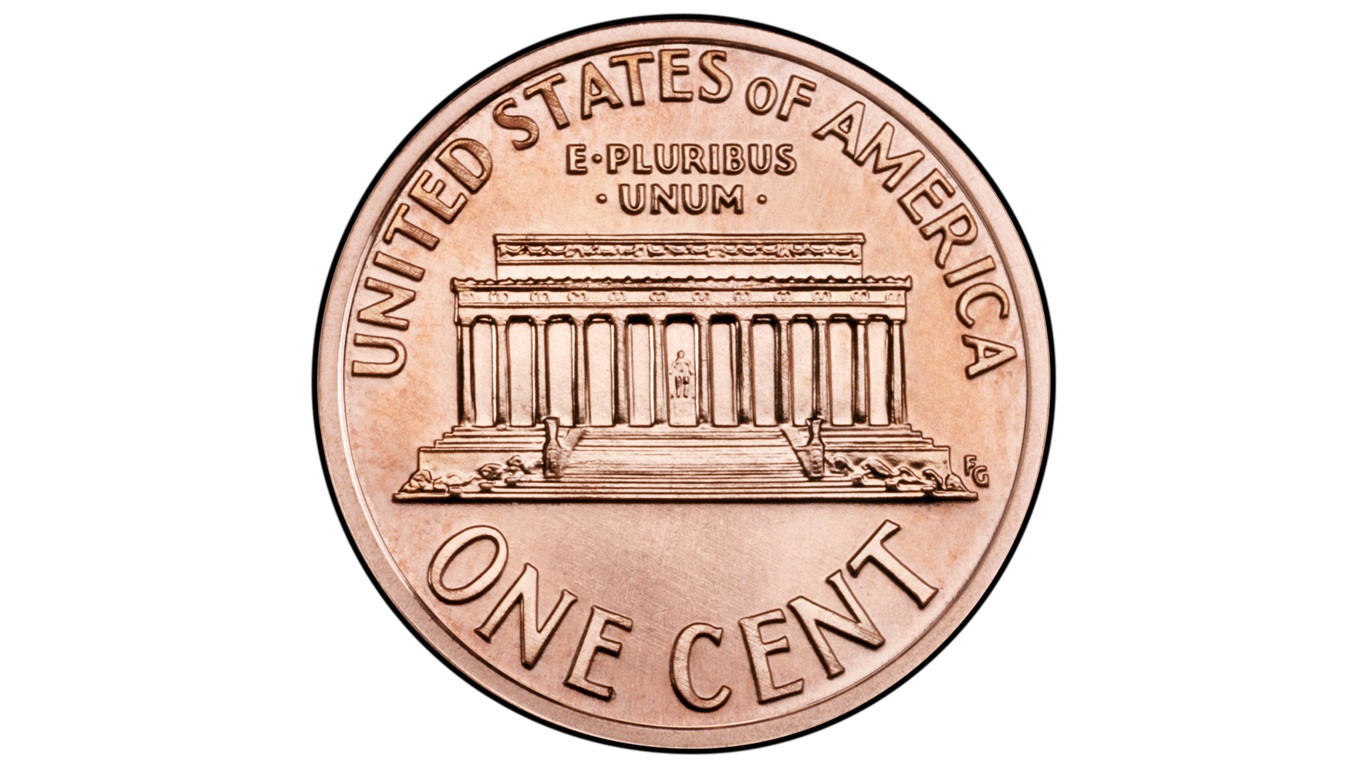
The world of retail has been in a state of disruption for many years now. Brick-and-mortar retailers have been fighting the e-commerce leaders, and the so-called omnichannel offerings by big retailers are creating many winners and some rather large losers. It is without any real arguments at all that J.C. Penney Co. Inc. (NYSE: JCP) and Sears Holdings Corp. (NASDAQ: SHLD) have been and continue to be disasters. In some analogous ways, these two companies have experienced high-altitude engine flameouts.
24/7 Wall St. has not been all that hopeful on J.C. Penney nor on Sears. It might seem fitting to wonder which company ultimately may fail first, but between now and then (if “then” actually comes) there is a more pressing question: Which of these two fallen retail giants will become a classic penny stock first, J.C. Penney or Sears?
Before thinking this question is too brutal or unfair to ask, it’s important to consider a few things about both retailers. These stocks have continued to slide over time. Both were last seen trading under $2.00 per share. Analysts on Wall Street have all but abandoned these two retail giants. Neither Sears nor J.C. Penney seems to have any serious turnaround plans that make the businesses look attractive going forward. And both companies have burned shareholders enough that management’s credibility should be a top priority.
J.C. Penney has seen its share price trade under $10 for most of the past five years. It became far worse over the course of 2018. That under-$10 status has been mostly true for Sears since the end of 2016, but it was a $40 stock as recently as June of 2015 and appears to have been in the $60s and $70s for part of 2011.
In the case of J.C. Penney, its dismal earnings report already was followed by a major analyst downgrade parade. Citigroup has now downgraded its price target to less than $1.00, maintaining a Sell rating and slashing its target to $0.50 from $2.00. Credit Suisse recently maintained its Underperform rating on J.C. Penney and lowered its target price to $1.00 from $2.00. Over the last week, the company saw its share price drop from about $2.65 to $1.65, and that was after a further 8% drop on Monday’s early trading.
J.C. Penney looks like a candidate to close even more stores after already having tried that move in prior years. It also finds itself among the most shorted New York Stock Exchange (NYSE) stocks. It remains a mystery whether J.C. Penney’s move to pick up slack from the Babies-R-Us disappearance will pay off. And the CEO departure in May of this year only left that much more of a hole in its future.
Nothing seems to be working for the combination of Sears and Kmart. Driving to a Sears store is just not exciting, and the experience at its stores honestly feels like what would happen if you left a store without any remodeling for a couple or more decades. Eddie Lampert has been making financing efforts for Sears, but it’s not exactly a case in which he’s thought of as a savior or resurrection artist any longer. Going after the company’s Kenmore appliances unit may only hurt further and leave tens of thousands of employees without a spot. Did anyone even notice Sears further branching out into e-commerce after announcing 63 Sears and Kmart store closures? And earlier this year S&P pointed out that Sears may be in default on terms of some of its debt. There’s more bad news to list, but it has gone on for too many years and may be too depressing to keep making comments.
Thomson Reuters paints a dismal past and future picture for both J.C. Penney and Sears. The consensus sell-side target for J.C. Penney calls for sales of $12.5 billion in the past two years to drift down to $12.24 billion this year and to about $12.2 billion in the two years ahead. Will those estimates remain if J.C. Penney announces more store closures? Sears is by and large not followed by Wall Street any longer, which only makes its outlook seem even more questionable. The revenues for Sears in 2014 were $36 billion, but that was down to $16 billion a year ago. Not very promising for either company.
If either stock manages to dip under $1 per share, the key exchanges will have some serious decisions to make. Neither the NYSE nor the Nasdaq prefers to keep stocks with a full listing if their shares trade under $1. The NYSE can choose to boot any company’s common stock if the share price goes and remains under the $1 mark for 30 consecutive days. The major exchanges also will look at the market capitalization of any listed company, but the $1 price minimum is generally the most common reason a stock would be delisted.
At the time companies are given a period to respond or to remedy any listing deficiencies, most companies opt for the “reverse stock split” to rectify the situation, often viewed by the trading and investing public as a final act of desperation by a company. If a company is removed from either exchange, the shares often end up trading over-the-counter for some time and many investors are simply unable to easily buy or sell the shares based on rules at their brokerage firms or by their own investment policies.
Sears was last seen trading down 3% at $1.27, in a new 52-week trading range of $1.24 to $9.63 and with a market cap of less than $150 million. J.C. Penney shares were trading at $1.65, with a market cap just above the $500 million mark.
24/7 Wall St. has already proposed that J.C. Penney just change its name to “The Penny.” Perhaps Sears could change its store names to Smears and Decay-mart. These may seem unkind, but there is nothing kind that any sensible investor (or consumer) has to say here.
Feel free to take our poll about whether it will be Sears or J.C. Penney that becomes a penny stock first. This poll was set to expire in one week.
[polldaddy poll=10084579]
Travel Cards Are Getting Too Good To Ignore (sponsored)
Credit card companies are pulling out all the stops, with the issuers are offering insane travel rewards and perks.
We’re talking huge sign-up bonuses, points on every purchase, and benefits like lounge access, travel credits, and free hotel nights. For travelers, these rewards can add up to thousands of dollars in flights, upgrades, and luxury experiences every year.
It’s like getting paid to travel — and it’s available to qualified borrowers who know where to look.
We’ve rounded up some of the best travel credit cards on the market. Click here to see the list. Don’t miss these offers — they won’t be this good forever.
Thank you for reading! Have some feedback for us?
Contact the 24/7 Wall St. editorial team.
 24/7 Wall St.
24/7 Wall St. 24/7 Wall St.
24/7 Wall St.



